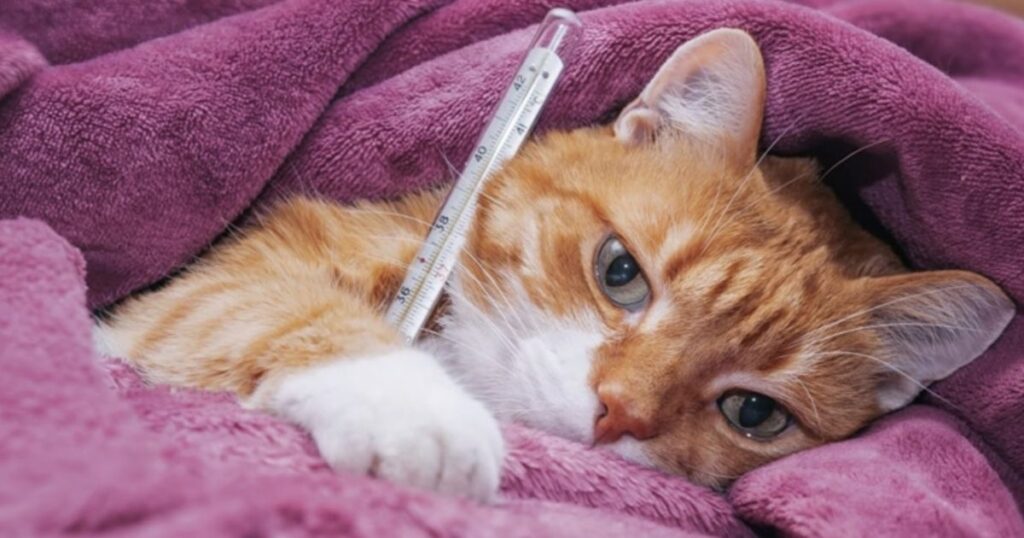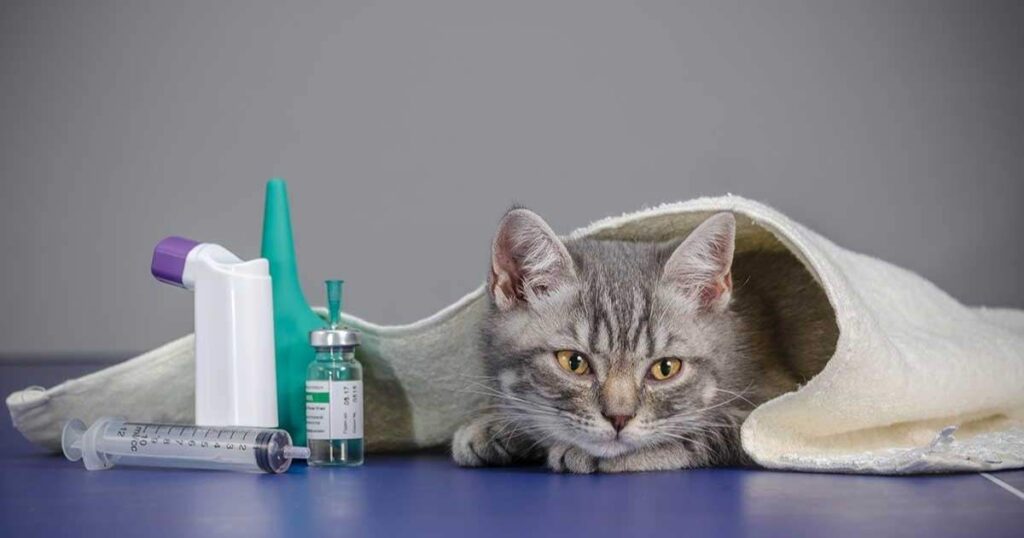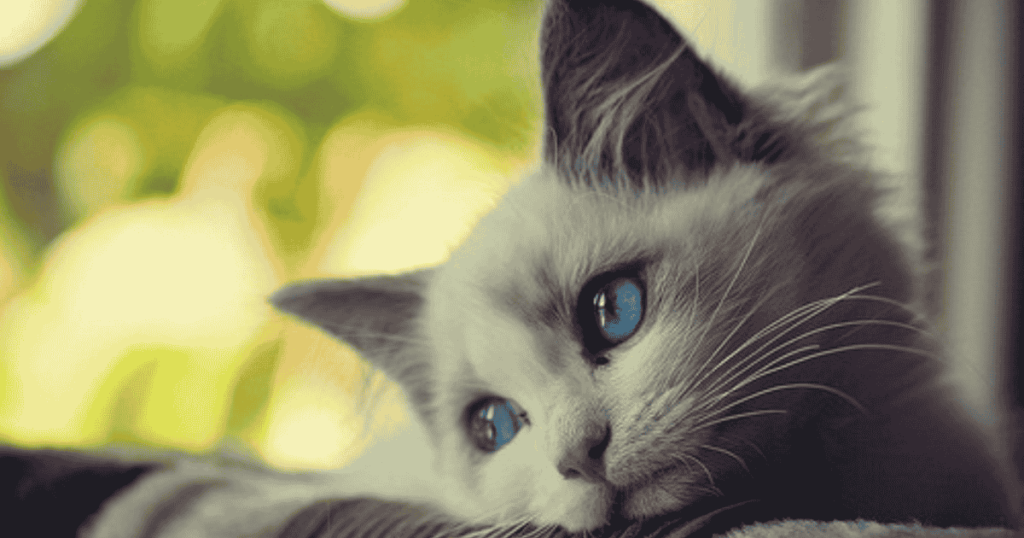Cats communicate their needs through subtle behaviors, and recognizing the warning signs that your cat is crying for help is crucial for their well-being. These signs can range from changes in appetite to sudden aggression or hiding.
Is your cat trying to tell you something? Understanding these signals could be the key to keeping your feline friend healthy and happy.
Behavioral Changes That Signal Distress
Cats are masters at hiding their discomfort, but certain behavioral changes can be red flags that something is wrong. Sudden aggression or withdrawal from social interaction is often a sign of pain or fear. If your cat starts hissing, biting, or avoiding you, it’s essential to pay attention.
Excessive vocalization, such as increased meowing or yowling, especially at odd times, can indicate stress or illness. Additionally, any changes in eating or drinking habits, like refusing food or water, might signal an underlying health issue. These behaviors shouldn’t be dismissed as mere quirks your cat may be crying out for help.
How to Know If Your Cat Is Sick
Recognizing when your cat is sick can be challenging, as they often mask their symptoms. However, there are telltale signs to watch for. A sudden drop or increase in weight can indicate serious conditions like thyroid issues or diabetes.

If your cat is having difficulty breathing, wheezing, or showing signs of labored breathing, it could be a respiratory problem that needs immediate attention. Changes in grooming habits, such as a dull coat or excessive shedding, can also be a warning sign.
If your cat is sleeping more than usual, hiding, or exhibiting litter box issues, these may be signs of illness. Regular vet check-ups and close observation can help you catch these problems early, ensuring your cat gets the care it needs.
20 Signs Your Cat Is Sick
Cats are known for their independence and stoic nature, which can make it challenging to detect when they’re not feeling well. Unlike dogs, cats tend to hide their symptoms, making it crucial for pet owners to be vigilant and aware of subtle changes in behavior and appearance.
Identifying the signs of illness early can be vital in ensuring your cat receives the necessary care and treatment. Here are 20 key signs that may indicate your cat is sick.
1. Changes in Appetite
One of the first signs that something might be wrong with your cat is a sudden change in their eating habits. If your cat is eating significantly less or more than usual, it could be a sign of various health issues ranging from dental problems to more serious conditions like kidney disease.
2. Weight Loss or Gain
Unexpected weight loss or gain is a red flag. Weight loss can indicate issues such as hyperthyroidism, diabetes, or cancer, while weight gain may suggest an endocrine disorder or fluid retention due to organ failure.
3. Lethargy
If your usually active cat is suddenly spending most of its time sleeping or seems less energetic, this could indicate that they are not feeling well. Lethargy is a common symptom in cats with underlying health issues.
4. Increased Thirst
An increase in water intake can be a sign of diabetes or kidney disease. If you notice your cat drinking more water than usual, it’s important to consult your veterinarian.
5. Changes in Urination
Frequent urination or difficulty urinating can indicate urinary tract infections, kidney disease, or diabetes. Pay attention to how often your cat is using the litter box and whether they seem to be in discomfort when doing so.
6. Vomiting
While occasional vomiting might not be cause for concern, frequent or severe vomiting can be a sign of gastrointestinal issues, poisoning, or even a blockage. Persistent vomiting should be evaluated by a vet.
7. Diarrhea or Constipation
Changes in bowel movements, such as diarrhea or constipation, can indicate digestive problems, parasites, or dietary issues. Chronic diarrhea or constipation requires medical attention.
8. Coughing or Sneezing
Coughing and sneezing in cats can be symptoms of respiratory infections, allergies, or more serious conditions like asthma. If your cat has a persistent cough or sneeze, a veterinary visit is recommended.
9. Difficulty Breathing
Labored breathing, wheezing, or open-mouth breathing are serious symptoms that could indicate respiratory distress, heart disease, or a blockage. Immediate veterinary care is necessary if your cat is struggling to breathe.
10. Changes in Coat Condition
A healthy cat usually has a shiny, well-groomed coat. If your cat’s fur becomes dull, matted, or greasy, or if they are grooming excessively or not at all, this can be a sign of stress, skin conditions, or systemic illness.
11. Excessive Shedding
While cats naturally shed, excessive shedding or bald spots may indicate underlying health problems such as allergies, parasites, or stress.
12. Bad Breath
Bad breath in cats, known as halitosis, is often a sign of dental disease. It can also be an indication of more serious conditions such as kidney disease or diabetes.
13. Behavioral Changes
Sudden changes in behavior, such as increased aggression, hiding, or clinginess, can be indicators that your cat is in pain or discomfort. Behavioral changes are often the first signs of illness in cats.
14. Unusual Vocalization
Cats communicate through vocalization, and any increase in meowing, howling, or yowling especially if it’s out of character could indicate that they are unwell or in distress.
15. Hiding
While it’s normal for cats to seek solitude occasionally, excessive hiding can be a sign that your cat is feeling unwell. Cats often hide when they are in pain or frightened.
16. Changes in Grooming Habits
A sudden lack of grooming or excessive grooming can be a sign of stress, pain, or a health issue. Cats that stop grooming may be too sick or depressed to care for themselves.
17. Swelling or Lumps
Any unexplained swelling, lumps, or bumps on your cat’s body should be checked by a vet. These could be signs of abscesses, tumors, or other serious conditions.
18. Discharge from Eyes or Nose
Discharge from the eyes or nose is not normal and could indicate an infection, allergies, or other health problems. Any persistent discharge should be evaluated by a veterinarian.
19. Uncoordinated Movements
If your cat suddenly becomes uncoordinated, seems to be stumbling, or has difficulty jumping, this could be a sign of neurological issues or a serious illness affecting the nervous system.
20. Changes in Litter Box Habits
Urinating or defecating outside the litter box is a common sign of illness or distress in cats. This behavior can be related to urinary tract infections, bladder stones, or even psychological stress.
Also Read : snake plant toxic to cats
Emergency Situations and Your Cat
Cats are generally good at masking discomfort, making it challenging to recognize when they’re in distress. However, some situations demand immediate attention. Knowing when to act quickly can make all the difference in saving your cat’s life. Here are some emergency scenarios that require urgent care:
Breathing Difficulties
If your cat is struggling to breathe, wheezing, or has labored breathing, it could be a sign of a severe respiratory issue or heart failure. Immediate veterinary attention is crucial.
Severe Bleeding
Any uncontrolled bleeding from wounds or orifices should be treated as an emergency. Apply pressure to the wound and get to the vet immediately.
Inability to Urinate
Straining to urinate or crying out in pain while attempting to use the litter box could indicate a urinary blockage, especially in male cats. This condition is life-threatening and needs urgent care.
Seizures or Collapse
Seizures, sudden collapse, or unresponsiveness are all serious signs that your cat is in distress. Transport your cat to the vet immediately if any of these occur.
Ingestion of Toxic Substances
If your cat has ingested something toxic, like household chemicals, certain plants, or medications, seek emergency care immediately. Time is critical in preventing irreversible damage.
What to Do in an Emergency
- Stay Calm: Your cat can sense your stress. Stay calm to help manage the situation effectively.
- Call Your Vet: Contact your vet or an emergency animal clinic for immediate advice.
- Transport Safely: Use a secure carrier to transport your cat to the vet to prevent further injury.
Recognizing and responding to emergencies promptly can save your cat’s life. Always have your vet’s contact information readily available, and don’t hesitate to act when your cat shows signs of distress.
How to Prevent Illness in Cats

Preventing illness in cats involves a combination of regular veterinary care, a healthy lifestyle, and attentive observation. Routine vet check-ups are crucial for early detection of potential health issues. Vaccinations parasite control, and dental care are essential components of a preventive health plan.
Providing a balanced diet tailored to your cat’s age and health needs is vital in maintaining a strong immune system. Ensure your cat has access to fresh water at all times to prevent dehydration and related issues like kidney disease.
Regular exercise and mental stimulation are also important in preventing obesity and associated illnesses. Monitor your cat for any changes in behavior, appetite, or litter box habits, as these can be early signs of health problems. Keeping your cat indoors can reduce exposure to infectious diseases, parasites, and accidents.
Lastly, maintaining a stress-free environment helps in preventing stress-related illnesses. By being proactive and vigilant, you can significantly reduce the risk of illness and ensure your cat lives a long, healthy life.
Conclusion:
Preventing illness in cats requires proactive care, including regular vet visits, a balanced diet, and a healthy lifestyle. By staying vigilant and addressing any changes in behavior promptly, you can help your cat maintain optimal health. Regular exercise, a stress free environment, and preventive measures are key to ensuring your feline friend enjoys a long, happy life.
People also ask
How do you know if a cat is crying for help?
A cat crying for help often exhibits unusual vocalizations, changes in behavior, or signs of distress such as hiding or aggression.
How to tell if a cat is suffering?
Signs of suffering in a cat include lethargy, pain responses to touch, and changes in eating, drinking, or litter box habits.
How to tell if your cat is unwell?
Look for symptoms like changes in appetite, weight loss or gain, excessive grooming, or unusual behaviors such as hiding or aggression.
How to comfort a sick cat?
Create a quiet, comfortable space for your cat, offer their favorite food and water, and gently provide affection. Consult a vet for specific care instructions.







